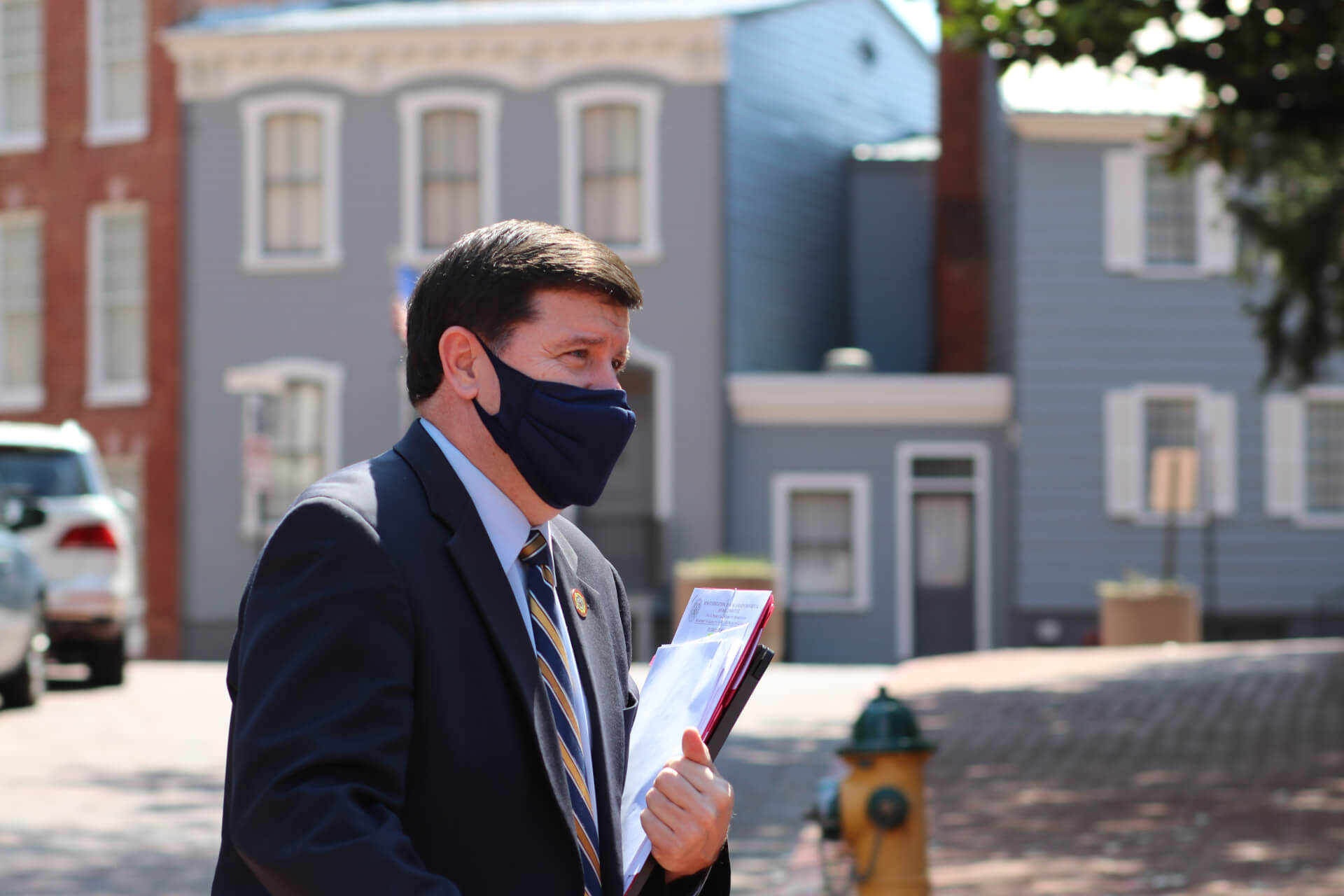Lawmakers Debating Whether to Allow Tiered Local Income Tax Brackets

Maryland’s Senate moved forward with a bill to let counties to set local income taxes at different rates for lower-income and wealthy residents.
The Senate version of the “Local Tax Relief for Working Families Act of 2021” passed out of the chamber on a partisan vote last month. But Republicans revived their concerns about the bill Tuesday as the House version received initial approval in the Senate.
“The only tax relief left is in the title of the bill,” Senate Minority Leader Bryan W. Simonaire (R-Anne Arundel) said.
As amended, the bill limits the highest local income tax rates to 3.2%, which 11 counties and the city of Baltimore already impose. The bill also raises the minimum for local income taxes to 2.25% — up from 1% — to match the current rate in Worcester County, which has the lowest rate in the state. Counties can still set different brackets for different income levels.
Some county leaders, notably Anne Arundel County Executive Steuart Pittman (D), have lobbied for the change as a way to make local tax systems more equitable.
But Simonaire said if the intent was to create progressive policy, the amendments won’t make it so. Counties with the rate set at the proposed minimum won’t be able to drop it lower for some residents, and counties with the rate set at the current maximum would only be able to drop rates for some — at a loss of revenue for county coffers.
As introduced in January, the bill would have allowed counties to raise their highest local income tax rate to 3.5% for individuals earning more than $500,000, but that provision was struck.
“The way this is amended, it protects the rich and hurts the working class,” Simonaire said.
But Sen. James C. Rosapepe (D-Prince George’s), sponsor of the Senate bill, stressed that it is enabling legislation and that counties would have to go through local processes to make any changes.
And the bill could still result in bringing relief for working families, Rosapepe said.
For counties that are already at the 3.2% maximum tax rate, “all they can do is lower taxes for working people,” he said.
Simonaire also took issue with a provision in the bill that he said incentivizes counties to raise their income tax levels.
The state makes “disparity grants” to some counties to help them raise funds for critical services like schools when they have a less-wealthy tax base. In order to qualify for the grants, those counties have to demonstrate that they have made efforts to raise sufficient revenue on their own.
Under the provision, counties that set an income tax rate between 2.8% and 3% are eligible for at least 20 percent of a state disparity grant. Counties that set the rate at 2.9% or higher for all filers and 3% or higher for people earning more than $100,000 would be eligible for 40% of the grant money. Counties that impose a rate of at least 3.1% and a 3.2% rate for those earning more than $100,000, would be eligible for 75% of the county’s disparity grant.
The goal of the provision was to alter the disparity grant formula to make sure that counties are not penalized if they create a bracketed income tax system, Rosapepe said.
Meanwhile, the Senate bill was voted out of the House Ways and Means Committee on a near party-line vote Tuesday afternoon. Republican Kevin B. Hornberger (R-Cecil) joined Democrats in voting in favor of the measure.
During a subcommittee hearing, Republican Jason C. Buckel (R-Allegany) said he has supported the concept of a bracketed local income tax in the past because it’s the only real way for counties with rates already set at the maximum to provide relief without losing too much revenue.
He still has a concern that there’s no requirement for counties that implement a bracketed collection system as a result of this bill to actually cut taxes; instead, the counties could keep their current rate as the new lowest rate and establish higher rates for higher-income residents, Buckel said.
“That’s my only heartburn with it … just the concept of, will Anne Arundel County, in particular, simply use it to increase taxes on one group of taxpayers without providing any actual tax relief for the majority of other filers?” Buckel asked.
Del. Julie Palakovich Carr (D-Montgomery), sponsor of the House bill, noted that Pittman, in written testimony to the committee, said Anne Arundel County is looking at ways to provide a revenue-neutral tax cut for lower income residents.
Buckel called the bill a “conundrum” and ultimately voted against it in committee.
The measure, which is now identical in both chambers, could be back on both the House and Senate floors on Wednesday.





 Creative Commons Attribution
Creative Commons Attribution